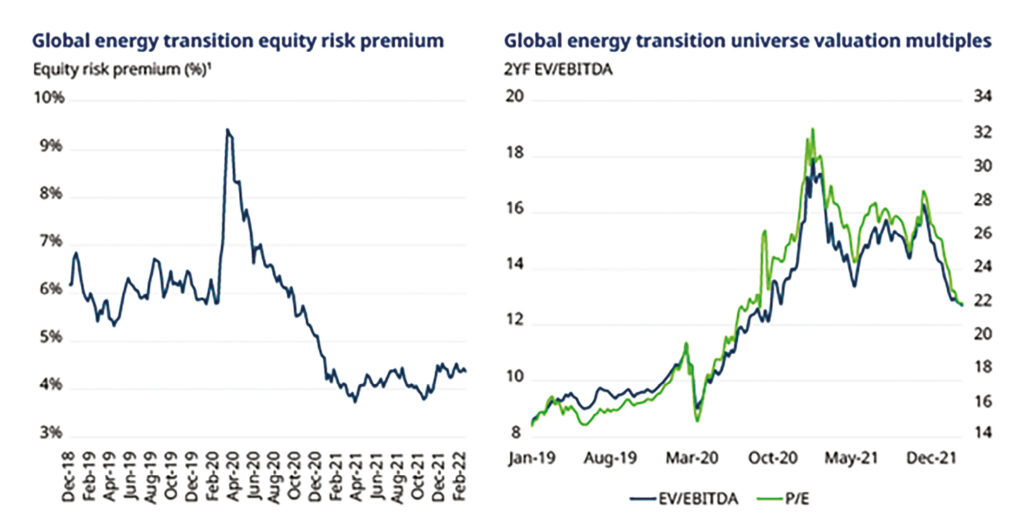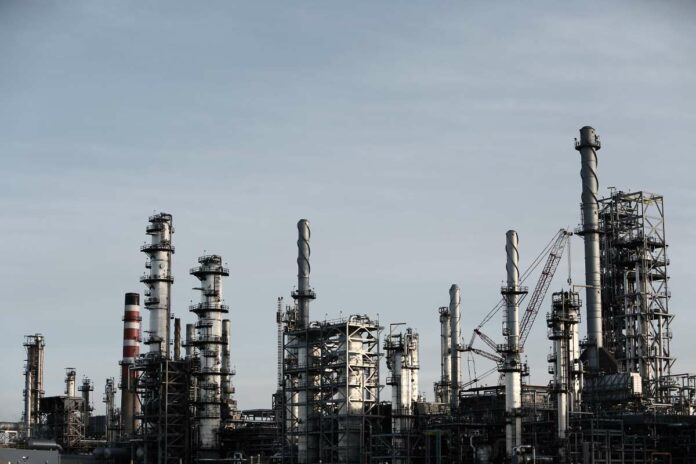The Russian invasion of Ukraine represents a devastating attack on Ukrainian and European democracy and our first thoughts are with the people of Ukraine, who are courageously fighting to defend their freedom and sovereignty.
As investors, we must consider the implications of this crisis for our clients. We see three major risks affecting equity investments in the energy transition, as well as financial markets more broadly.
Risk 1. Inflation and especially prolonged higher prices for energy and raw materials
Inflation around the world was already at multi-decade highs before Russia invaded Ukraine. This was particularly the case for energy prices.
Given that Russia accounts for a significant part of the world’s oil (c.12%) and gas supplies (c.17%), the current situation creates clear risks around energy flows. This concern has caused oil, gas and power prices across Europe to continue their steep recent rise.
Russia is also a major supplier of platinum group metals (PGM) and agricultural commodities. It also has production capacity tied into many industrial value chains. The inflationary impulse from the conflict – and associated ratcheting up of sanctions from the West – is significant.
These further inflationary pressures and constraints in supply chains across Europe may continue to weigh on corporate earnings.

Risk 2. Economic outcomes of inflation
The second risk concerns the potential economic outcomes of inflation. These include tighter financial conditions, higher energy prices, and potential wage increases – and what they may mean for economic growth. History has shown that energy shortages and conflicts resulting in higher energy prices can slow down economies significantly. The risk of such a slowdown was already there before the escalation in Ukraine, and it is certainly higher now.
Risk 3. Potential shift out of equities
The final risk is around a broader shift in investors’ attitude to risk and a resultant sell-off in the wider stock market. This could result in equity outflows (after a period of enormously strong flows into equity funds around the world) and a return to bonds as investors look for perceived safe-havens.
As conventional energy prices spike higher; the relative economic attractiveness of renewables continues to grow.
How will these risks affect energy transition equities?
We believe that all three of these risks could impact energy transition shares to some extent.
The sector has been more exposed than most to higher raw material prices and logistics bottlenecks. The current situation will not help these ease.
Valuations in the space have retraced from their 2021 highs. However, the equity risk premium (ERP) remains lower than previous levels, creating a risk that valuations could fall further. (The ERP is the extra return, over the yield on government bonds, that equity investors expect to receive. The ERP shrinks when stock prices rise, because their future growth potential shrinks, and grows when stock prices fall.)
The threat from a broader economic slowdown will likely be less impactful because of the structural nature of most energy transition markets. But those sectors that are more exposed to the economic cycle (autos, electrical equipment, etc) will likely suffer. We should also not rule out the potential impact that shifting consumer demand could have on more customer-facing energy transition goods.
What could be the longer-term consequences of the crisis?
There may be some potentially interesting consequences of the higher conventional energy prices and the current conflict in Ukraine from an energy transition perspective.

Russia is a major supplier of the world’s oil and gas. It can use this natural capital to its advantage, particularly given Europe’s reliance on its fuels. One of the benefits of renewable power is that the resources that energise it are more equally spread and can help reduce dependence on key suppliers.
What’s more, as conventional energy prices spike higher, the relative economic attractiveness of renewables continues to grow. This is the case even after considering the higher costs of equipment from supply chain constraints.
The situation in Ukraine adds further credence to the argument for transitioning our energy system to one based on cheap, clean, reliable power.
However, we would stress that this does not change the near-term growth and earnings forecasts for companies. Indeed, they could potentially be outweighed by more prominent inflationary risks. Supply chains are still disrupted and it takes time for new demand and projects to come through.













